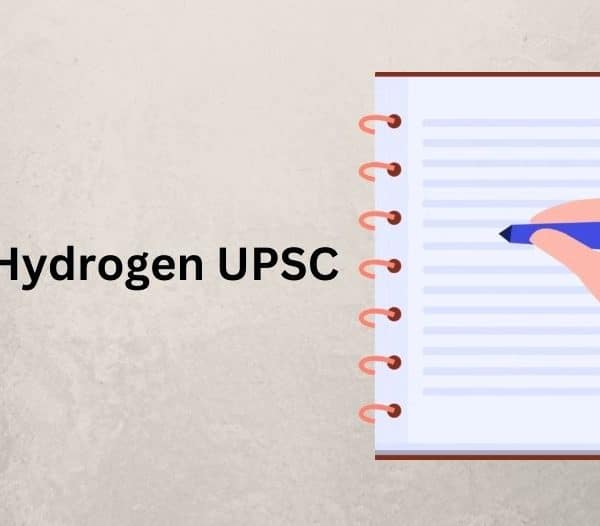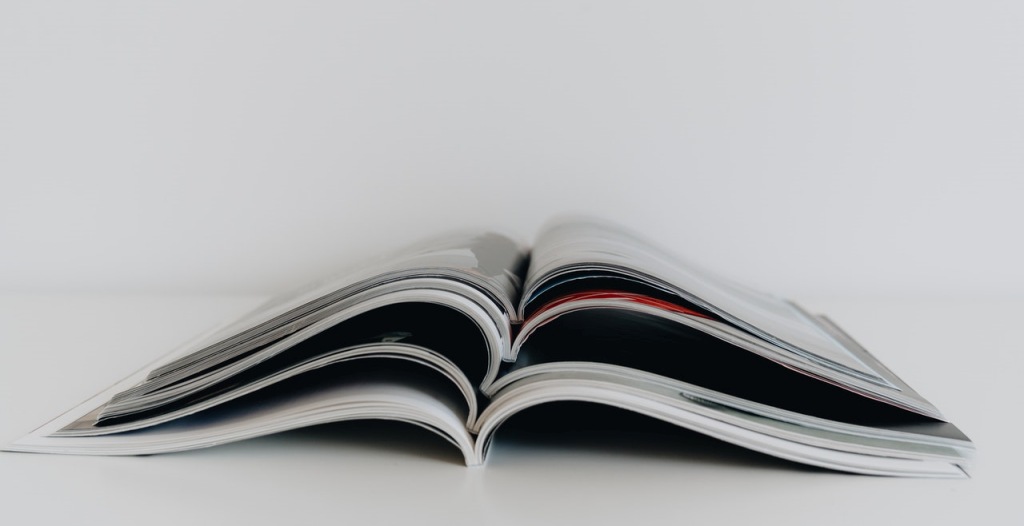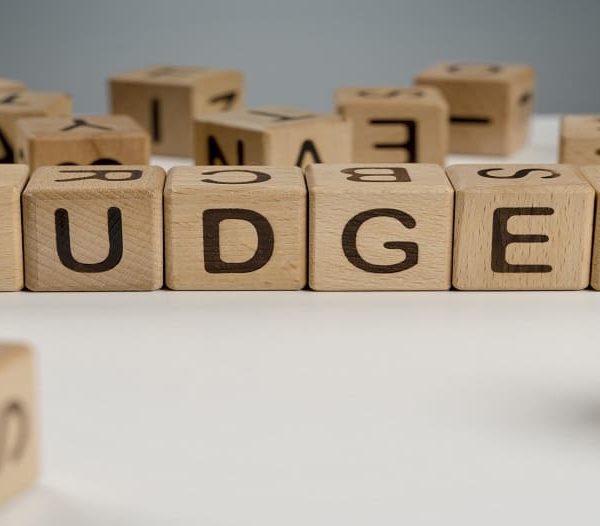Are you deciding on taking History as your optional subject in the IAS exam? Here is a History optional strategy for you. But before knowing that you should know the UPSC optional history syllabus. Read the article for all knowledge on the subject.
UPSC Optional History Syllabus
Every optional subject syllabus can be divided into two parts.
- Paper-1
- Paper-II
The syllabus for Paper one is:
1.Sources:
Archaeological sources: Exploration, excavation, epigraphy, numismatics, monuments Literary sources: Indigenous: Primary and secondary; poetry, scientific literature, literature, literature in regional languages, religious literature. Foreign accounts: Greek, Chinese and Arab writers.
2. Pre-history and Proto-history
Geographical factors; hunting and gathering (palaeolithic and mesolithic); Beginning of agriculture (neolithic and chalcolithic).
- Indus Valley Civilization: Origin, date, extent, characteristics, decline, survival and significance, art, and architecture.
4. Megalithic Cultures
Distribution of pastoral and farming cultures outside the Indus, Development of community life, Settlements, Development of agriculture, Crafts, Pottery, and Iron industry.
5. Aryans and Vedic Period
Expansions of Aryans in India. Vedic Period: Religious and philosophic literature; Transformation from Rig Vedic period to the later Vedic period; Political, social and economical life; Significance of the Vedic Age; Evolution of Monarchy and Varna system.
6. Period of Mahajanapadas
Formation of States (Mahajanapada): Republics and monarchies; Rise of urban centres; Trade routes; Economic growth; Introduction of coinage; Spread of Jainism and Buddhism; Rise of Magadha and Nandas. Iranian and Macedonian invasions and their impact.
7. Mauryan Empire
Foundation of the Mauryan Empire, Chandragupta, Kautilya and Arthashastra; Ashoka; Concept of Dharma; Edicts; Polity, Administration; Economy; Art, architecture and sculpture; External contacts; Religion; Spread of religion; Literature. The disintegration of the empire; Sungas and Kanvas.
8. Post – Mauryan Period (Indo-Greeks, Sakas, Kushanas, Western Kshatrapas)
Contact with the outside world; growth of urban centers, economy, coinage, development of religions, Mahayana, social conditions, art, architecture, culture, literature, and science.
9. Early State and Society in Eastern India, Deccan and South India
Kharavela, The Satavahanas, the Tamil States of the Sangam Age; Administration, economy, land grants, coinage, trade guilds and urban centers; Buddhist centers; Sangam literature and culture; Art and architecture.
10. Guptas, Vakatakas and Vardhanas
Polity and administration, Economic conditions, Coinage of the Guptas, Land grants, Decline of urban centers, Indian feudalism, Caste system, Position of women, Education and educational institutions; Nalanda, Vikramshila and Vallabhi, Literature, scientific literature, art and architecture.
11. The Regional States during the Gupta Era
The Kadambas, Pallavas, Chalukyas of Badami; Polity and Administration, Trade guilds, Literature; growth of Vaishnava and Saiva religions. Tamil Bhakti movement, Shankaracharya; Vedanta; Institutions of temple and temple architecture; Palas, Senas, Rashtrakutas, Paramaras, Polity, and administration; Cultural aspects. Arab conquest of Sind; Alberuni, The Chalukyas of Kalyana, Cholas, Hoysalas, Pandyas; Polity and Administration; local Government; Growth of art and architecture, religious sects, Institution of temple and Mathas, Agraharas, education and literature, economy and society.
Also Read: How to Start IAS Preparation at Home Without Any Coaching? Learning Strategy for UPSC
12. Themes in Early Indian Cultural History
Languages and texts, major stages in the evolution of art and architecture, major philosophical thinkers and schools, ideas in Science and Mathematics.
13. Early Medieval India, 750-1200
Polity: Major political developments in Northern India and the Peninsula, origin and the rise of Rajputs – The Cholas: administration, village economy and society – “Indian Feudalism” – Agrarian economy and urban settlements – Trade and commerce – Society: the status of the Brahman and the new social order – Condition of women – Indian science and technology
14. Cultural Traditions in India, 750- 1200
Philosophy Skankaracharya and Vedanta, Ramanuja and Vishishtadvaita, Madhva and BrahmaMimansa – Religion: Forms and features of religion, Tamil devotional cult, growth of Bhakti, Islam and its arrival in India, Sufism – Literature: Literature in Sanskrit, growth of Tamil literature, literature in the newly developing languages, Kalhan’s Rajtarangini, Alberuni’s India – Art and Architecture: Temple architecture, sculpture, painting
15. The Thirteenth Century
Establishment of the Delhi Sultanate: The Gurian invasions – factors behind Ghurian success – Economic, social and cultural consequences – Foundation of Delhi Sultanate and early Turkish Sultans – Consolidation: The rule of Iltutmish and Balban
16. The Fourteenth Century
“The Khalji Revolution” – Alauddin Khalji: Conquests and territorial expansion, agrarian and economic measures – Muhammad Tughluq: Major projects, agrarian measures, the bureaucracy of Muhammad Tughluq – Firuz Tughluq: Agrarian measures, achievements in civil engineering and public works, decline of the Sultanate, foreign contacts and Ibn Battuta’s account
17. Society, Culture, and Economy in the Thirteenth and Fourteenth Centuries
Society: composition of rural society, ruling classes, town dwellers, women, religious classes, caste and slavery under the Sultanate, Bhakti movement, Sufi movement – Culture: Persian literature, literature in the regional languages of North India, literature in the languages of South India, Sultanate architecture and new structural forms, painting, the evolution of a composite culture – Economy: Agricultural production, the rise of urban economy and non-agricultural production, trade and commerce
Also Read: Which Degree is Best for IAS? Here’s How to Start Preparing for UPSC in College?
18. The Fifteenth and Early Sixteenth Century
Political Developments and Economy: – Rise of Provincial Dynasties: Bengal, Kashmir (Zainul Abedin), Gujarat, Malwa, Bahmanids – The Vijayanagara Empire – Lodis – Mughal Empire, First phase: Babur and Humayun – The Sur Empire: Sher Shah’s administration – Portuguese Colonial enterprise – Bhakti and Sufi Movements
19. The Fifteenth and early Sixteenth Century
Society and Culture: – Regional cultural specificities – Literary traditions – Provincial architecture – Society, culture, literature, and the arts in the Vijayanagara Empire.
20. Akbar
Conquests and consolidation of the Empire – Establishment of Jagir and Mansab systems – Rajput policy – Evolution of religious and social outlook, the theory of Sulh-i-kul and religious policy – Court patronage of art and technology
21. Mughal Empire in the Seventeenth Century
Major administrative policies of Jahangir, Shahjahan and Aurangzeb – The Empire and the Zamindars – Religious policies of Jahangir, Shahjahan and Aurangzeb – Nature of the Mughal State – Late Seventeenth-century crisis and the revolts – The Ahom Kingdom – Shivaji and the early Maratha Kingdom.
22. Economy and Society in the Sixteenth and Seventeenth Centuries
Population, agricultural production, craft production – Towns, commerce with Europe through Dutch, English and French companies: a trade revolution – Indian mercantile classes, banking, insurance and credit systems – Condition of peasants, condition of women – Evolution of the Sikh community and the Khalsa Panth
23. Culture in the Mughal Empire
Persian histories and other literature – Hindi and other religious literature – Mughal architecture – Mughal painting – Provincial architecture and painting – Classical music – Science and technology
24. The Eighteenth Century
Factors for the decline of the Mughal Empire – The regional principalities: Nizam’s Deccan, Bengal, Awadh – Maratha ascendancy under the Peshwas – The Maratha fiscal and financial system – Emergence of Afghan Power, Battle of Panipat:1761 – State of politics, culture and economy on the eve of the British conquest
Also Read: IAS Coaching in Gurgaon: Top UPSC Institutes for Your Exam Preparation
UPSC Optional History Syllabus
Here is the Syllabus for paper two PART – II
1. European Penetration into India
The Early European Settlements; The Portuguese and the Dutch; The English and the French East India Companies; Their struggle for supremacy; Carnatic Wars; Bengal -The conflict between the English and the Nawabs of Bengal; Siraj and the English; The Battle of Plassey; Significance of Plassey.
2. British Expansion in India
Bengal- Mir Jafar and Mir Kasim; The Battle of Buxar; Mysore; The Marathas; The three Anglo-Maratha Wars; Punjab.
3. Early Structure of the British Raj
The early administrative structure; From diarchy to direct control; The Regulating Act (1773); The Pitt’s India Act (1784); The Charter Act (1833); The voice of free trade and the changing character of British colonial rule; The English utilitarian and India
4. Economic Impact of British Colonial Rule
(a) Land revenue settlements in British India; The Permanent Settlement; Ryotwari Settlement; Mahalwari Settlement; Economic impact of the revenue arrangements; Commercialization of agriculture; Rise of landless agrarian labourers; Impoverishment of the rural society.
(b) Dislocation of traditional trade and commerce; De-industrialisation; Decline of traditional crafts; Drain of wealth; Economic transformation of India; Railroad and communication network including telegraph and postal services; Famine and poverty in the rural interior; European business enterprise and its limitations.
5. Social and Cultural Developments
The state of indigenous education, its dislocation; Orientalist-Anglicist controversy, The introduction of western education in India; The rise of press, literature and public opinion; The rise of modern vernacular literature; Progress of science; Christian missionary activities in India.
6. Social and Religious Reform movements in Bengal and Other Areas
Ram Mohan Roy, The Brahmo Movement; Devendranath Tagore; Iswarchandra Vidyasagar; The Young Bengal Movement; Dayananda Saraswati; The social reform movements in India including Sati, widow remarriage, child marriage etc.; The contribution of Indian renaissance to the growth of modern India; Islamic revivalism – the Feraizi and Wahabi Movements.
7. Indian Response to British Rule
Peasant movements and tribal uprisings in the 18th and 19th centuries including the Rangpur Dhing (1783), the Kol Rebellion (1832), the Mopla Rebellion in Malabar (1841-1920), the Santal Hul (1855), Indigo Rebellion (1859-60), Deccan Uprising (1875) and the Munda Ulgulan (1899-1900); The Great Revolt of 1857 – Origin, character, causes of failure, the consequences; The shift in the character of peasant uprisings in the post-1857 period; the peasant movements of the 1920s and 1930s.
8. Factors Leading to the Birth of Indian Nationalism
Politics of Association; The Foundation of the Indian National Congress; The Safety-valve thesis relating to the birth of the Congress; Programme and objectives of Early Congress; the social composition of early Congress leadership; the Moderates and Extremists; The Partition of Bengal (1905); The Swadeshi Movement in Bengal; the economic and political aspects of Swadeshi Movement; The beginning of revolutionary extremism in India.
Also Read: How to Start Writing Practice? Preparation Tips for Answer Writing Practice
9. Rise of Gandhi; Character of Gandhian Nationalism
Gandhi’s popular appeal; Rowlatt Satyagraha; the Khilafat Movement; the Non-cooperation Movement; National politics from the end of the Non-cooperation movement to the beginning of the Civil Disobedience movement; the two phases of the Civil Disobedience Movement; Simon Commission; The Nehru Report; the Round Table Conferences; Nationalism and the Peasant Movements; Nationalism and Working-class movements; Women and Indian youth and students in Indian politics (1885-1947); the election of 1937 and the formation of ministries; Cripps Mission; the Quit India Movement; the Wavell Plan; The Cabinet Mission.
- Constitutional Developments in Colonial India between 1858 and 1935
11. Other strands in the National Movement the Revolutionaries
Bengal, the Punjab, Maharashtra, U.P, the Madras Presidency, Outside India. The Left; The Left within the Congress: Jawaharlal Nehru, Subhas Chandra Bose, the Congress Socialist Party; the Communist Party of India, other left parties.
12. Politics of Separatism; the Muslim League
The Hindu Mahasabha; Communalism and the politics of partition; Transfer of power; Independence.
13. Consolidation as a Nation
Nehru’s Foreign Policy; India and her neighbours (1947-1964); The linguistic reorganization of States (1935-1947); Regionalism and regional inequality; Integration of Princely States; Princes in electoral politics; the Question of National Language.
14. Caste and Ethnicity after 1947
Backward castes and tribes in post-colonial electoral politics; Dalit movements.
15. Economic Development and Political Change
Land reforms; the politics of planning and rural reconstruction; Ecology and environmental policy in post-colonial India; Progress of science.
16. Enlightenment and Modern Ideas
(i) Major ideas of Enlightenment: Kant, Rousseau
(ii) Spread of Enlightenment in the colonies
(iii) Rise of socialist ideas (up to Marx); spread of Marxian Socialism.
17. Origins of Modern Politics
(i) European States System.
(ii) American Revolution and the Constitution.
(iii) French revolution and aftermath, 1789-1815.
(iv) American Civil War with reference to Abraham Lincoln and the abolition of slavery.
(v) British Democratic Politics, 1815- 1850; Parliamentary Reformers, Free Traders, Chartists.
18. Industrialization
(i) English Industrial Revolution: Causes and Impact on Society
(ii) Industrialization in other countries: USA, Germany, Russia, Japan
(iii) Industrialization and Globalization.
19. Nation-State System
(i) Rise of Nationalism in the 19th century
(ii) Nationalism: state-building in Germany and Italy
(iii) Disintegration of Empires in the face of the emergence of nationalities across the world.
20. Imperialism and Colonialism
(i) South and South-East Asia
(ii) Latin America and South Africa
(iii) Australia
(iv) Imperialism and free trade: Rise of neo-imperialism.
21. Revolution and Counter-Revolution
(i) 19th Century European revolutions
(ii) The Russian Revolution of 1917-1921
(iii) Fascist Counter-Revolution, Italy and Germany.
(iv) The Chinese Revolution of 1949
22. World Wars
(i) 1st and 2nd World Wars as Total Wars: Societal implications
(ii) World War I: Causes and consequences
(iii) World War II: Causes and consequence
23. The World after World War II
(i) Emergence of two power blocs
(ii) Emergence of Third World and non-alignment
(iii) UNO and global disputes.
24. Liberation from Colonial Rule
(i) Latin America-Bolivar
(ii) Arab World-Egypt
(iii) Africa-Apartheid to Democracy
(iv) South-East Asia-Vietnam
25. Decolonization and Underdevelopment
(i) Factors constraining development: Latin America, Africa
26. Unification of Europe
(i) Post War Foundations: NATO and European Community
(ii) Consolidation and Expansion of European Community
(iii) European Union.
27. The Disintegration of the Soviet Union and the Rise of the Unipolar World
(i) Factors leading to the collapse of Soviet communism and the Soviet Union, 1985-1991
(ii) Political Changes in Eastern Europe 1989-2001.
(iii) End of the cold war and US ascendancy in the World as the lone superpower.
Check this History Optional Strategy to Ace UPSC
- Firstly start to memorize the syllabus. Divide the syllabus according to different time periods e.g: Ancient, Medieval, and Modern. To cover the whole syllabus you will be requiring 3 to four months of 12 hours per day. That is why I recommend you to start preparing as early as possible. Set goals that are achievable.
- Read NCERT for you clearing your basics and then move on to the standard reference books. Dates are very important. While you are studying keep making notes of the dates and revise them as the exam comes close.
- Make proper notes. For a vast syllabus like this, you will have to make consolidated notes for easy revision. Write only important keywords in your notes.
History Optional Answer Writing Tips to Master UPSC IAS Exam
- If you have correct knowledge about the topics then forming a proper flow of an answer won’t be very difficult. Keep practicing answer writing on a consistent basis and also mention economical as well as sustainable aspects in your answers. The examiner will judge your ability to analyze these aspects.
- Make a mental map of how the different time periods are connected to each other. History is nothing but the collections of stories. Therefore try remembering the events of history as you would remember a plot of a movie a long time ago.
- Practice previous year questions after every unit. Find questions from that particular channel. With a little inspection of the previous year question paper, you will be able to understand which topic is important which is not.
- Use fewer reference books. NCERT is a must-read book for building your foundation. Other than NCERT refer to one-two books to cover the syllabus and to avoid confusion.
Also Read: UPSC Month-Wise Study Plan for Mains: Check this Effective Post Prelims Strategy
UPSC History Question Paper
Here are some History Optional Question Papers:
For the year 2017
For the year 2018
For the year 2019
Also Read: Which stream is best for IAS after the 10th? Which subject is best for IAS?
Conclusion
As you see History syllabus is very vast. Constant revision and mock test practice are highly recommended to retain the information for a long time. Divide the syllabus according to the time period for a better understanding.
As you can see, the syllabus is vast and everything you study for Prelims and GS is included but in a much more detailed format. Hence, it can be said that if you start your history optional preparation right away even before the prelims, it will help you to cover the syllabus for GS, Prelims, and Optional papers successfully. Here are a few tips to cover the entire history syllabus in-depth and also tips to smartly answer the questions that will fetch the maximum marks:
Stick to the choicest few books for reference when you are preparing for IAS History Optional. NCERT is the ideal choice for giving you a basic idea about the chronology of Indian history from ancient times to post-independence India. Reference books are for going in-depth about the events. Hence, choose a few books which cover the entire syllabus for paper-1 and paper-2 rather than too many books which leads to more confusion.
Also Read : Promotion of IAS Officer: Understand the IAS Promotion Chart with Years







Thank you for providing a detailed strategy for the subject, can you also help with the similar tips for other ones?